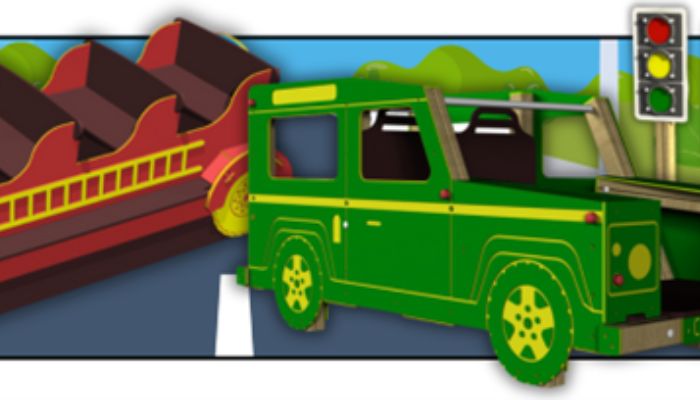We chat to outdoor play expert Claire from Creative Play, who shares how imaginative play can support early years development…
Training myths busted

The changing nature of early years qualifications, updates to the EYFS, and ambiguities in official guidance can make it difficult to know whether a specific member of staff has the right qualifications. Some practitioners have worked for years at one nursery, believing they were qualified, only to find when starting a new role that their qualification is not DfE-approved.
Most managers are aware that the Department for Education (DfE) maintains a list of “full and relevant” qualifications that allow practitioners to work at level 2 or level 3, and that the Early Years Foundation Stage (EYFS) framework sets out the legal requirements for the proportion of qualified staff a nursery must employ, depending on the ages of children being looked after. However, some other questions come up again and again.
Do practitioners with an early years degree count in ratio at level 6?
Not unless they have Qualified Teacher Status (QTS), Early Years Teacher Status (EYTS) or Early Years Professional Status (EYPS).
All degrees are classed as level 6 academically, but that’s not the same as being level 6 qualified within the EYFS. The only people who can count in ratio at level 6, which means they can look after 13 children aged three and over, are those with QTS, early years teacher status (EYTS) or early years professional status (EYPS), which was replaced by EYTS in 2013.
“This is something which has been debated frequently among those in the early years sector. The EYFS states you are level 6 qualified if you have EYTS, QTS, EYPS or ‘another approved qualification’,” says Sophie Hayter, apprenticeship manager at N Family Club, who runs Facebook group Early Years & Teaching Assistants Training & Qualifications. “This statement leads people to think an early years degree is an ‘approved qualification’, when in fact it is referring to any overseas teaching qualification that has been approved by the DfE through its overseas teaching comparison service.”
Can practitioners with an early years degree be counted in ratio at level 3?
Not always – you need to check the degree
Not all early years degrees give a practitioner a licence to practise at level 3. “Degrees cause the biggest confusion among the sector,” says Hayter. “Not all early years degrees are full and relevant, it depends on which university it was awarded by and whether the degree meets early years benchmark statements.”
For a degree to be full and relevant at level 3, the student must have spent some time on placements working within the EYFS, and their work on those placements must included an element of “assessed practice”. The DfE maintains a list of degrees which meet these requirements, but it is not definitive. If a specific degree is listed then it is full and relevant, but if it’s not, that doesn’t necessarily mean it’s not full and relevant.
If a practitioner doesn’t know whether their degree included an element of assessed practice within the EYFS, the manager can contact the university directly. In an attempt to tackle this, The Early Childhood Studies Degree Network has come up with a list of nine ‘competencies’ which degree students must be assessed against. Degrees which include these Graduate Practitioner Competencies are definitely full and relevant at level 3.
“If all universities did that it would really help the sector going forwards,” says Hayter. If a practitioner already has a full and relevant level 3 qualification, it is not so much of an issue as to whether their degree is full and relevant or not, as this qualification has already given them licence to practise within the level 3 ratio.
If an overseas qualification has been classed as level 3 by UK ENIC, does that mean the practitioner is level 3 qualified within the EYFS?
No, there’s some more checking to be done
If a practitioner gained his or her qualification in another country, it needs to be checked by UK ENIC, the UK national centre for the recognition of and evaluation of international qualifications and skills.
People working in any sector can apply for a Statement of Compatibility, which evaluates overseas qualifications to help employers understand where they fit in a UK context. This service might declare that a specific qualification is equivalent to a UK level 3. However, UK ENIC has a separate service for those working in early years, the Early Years Statement, which maps the details of an overseas early years qualification against the criteria set by the DfE.
“A lot of people don’t realise there are two types of ENIC translations, the basic and the early years comparability check,” says Hayter. It is rare that any overseas qualification is found to fully meet our early years educator requirements and there are usually extra steps that need to be taken to ensure that their qualification is deemed full and relevant.
If a practitioner holds a qualification that has been removed from the “full and relevant” list, are they no longer qualified?
If your qualification was full and relevant when you obtained it, it is full and relevant now.
Some qualifications have been flagged as no longer full and relevant if they were started after a certain date, but no qualifications have been “removed from the list” retrospectively. It is true that some practitioners have discovered that despite working at level 3 for many years, their qualification is not actually full and relevant. However, in those cases, nothing has changed – it was never on the list in the first place.
Does a level 3 qualification have to be branded “Early Years Educator” in order to be full and relevant?
That depends when it was started From September 2014, all full and relevant level 3 qualifications have been required to have Early Years Educator in the title. This makes checking whether they are full and relevant much easier.
However, this does not apply to qualifications started before September 2014, and it is vital to go by the start date and not the completion date when checking qualifications. A level 3 qualification gained in 2015, for example, may still be full and relevant even if it is not branded Early Years Educator, if the practitioner started it before September 2014. As with all pre-2014 qualifications, it will need to be checked against the DfE’s list.
“This is one of the most common misunderstandings I come across,” says Hayter. “For example, those who hold the Children and Young People’s Workforce Early Learning and Childcare Pathway, will have started their training before September 2014. as it was replaced by the Early Years Educator. However many employers see it is not on the post-September 2014 DfE list and think the individual is not qualified because they have gone by the date they gained the qualification, not the date they began it.”
Does a T-level in education and childcare offer a licence to practise at level 3?
Only if the person holding the qualification specialised in early years
The new education and childcare T-level has three pathways, and only one offers a license to practice. Managers should make sure that anyone with a T-level in education and childcare has taken the early years specialism.
Latest Features
The roll-out of new innovations doesn't always go to plan. Ben Case, education advisor at childhood education platform Tapestry, sets…
We discover how RafaKidz Medmenham transformed its outdoor space




